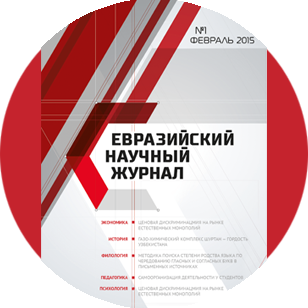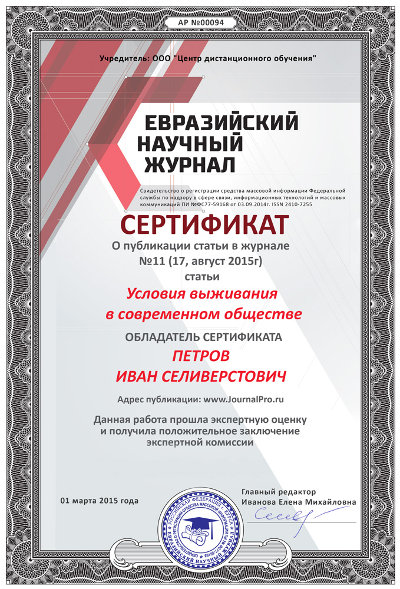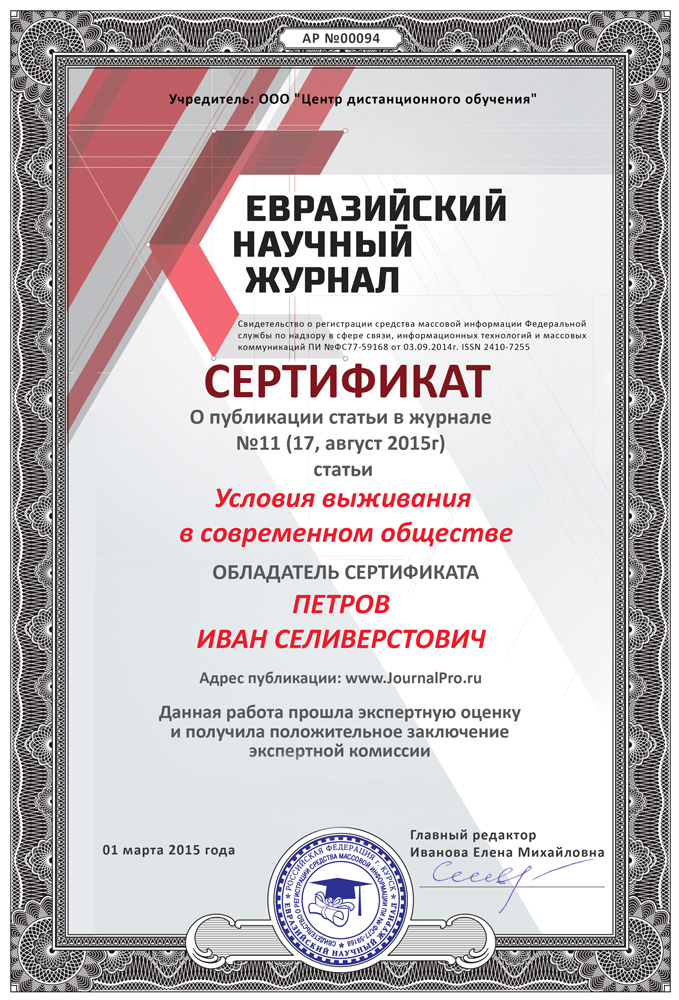Срочная публикация научной статьи
+7 995 770 98 40
+7 995 202 54 42
info@journalpro.ru
How to make a presentation successful and effective
Рубрика: Педагогические науки
Журнал: «Евразийский Научный Журнал №11 2018» (ноябрь, 2018)
Количество просмотров статьи: 2437
Показать PDF версию How to make a presentation successful and effective
Веренич Ирина Михайловна
преподаватель ГГУ им. Ф. Скорины,
Беларусь, Гомель
E-mail: irenevr@mail.ru
A multimedia presentation is a powerful way for students to learn and for teachers to reinforce and complement traditional studying. Students can take their own photographs and video, record their own voices, collect information from the Internet and combine it all in impressive and entertaining computer presentations. The possibilities are endless. As well as learning about their curriculum subjects, students engaged in multimedia projects learn vital computer skills, together with valuable social skills such as teamwork and collective decision-making.
There is a great variety of presentation contexts: press conference, briefing, demonstration, product launch, company presentation, interview/introduction, problem-solution speech, definition speech,
Any presentation has the structure: opening, main part and closing.
1. Opening
Here are some tips when you prepare a presentation:
a) Find out about the audience, the venue and the facilities.
b) Plan the content and structure.
c) Try to memorize the first five sentences of your talk.
d) Prepare visual aids.
e) Rehearse your presentation with friends or colleagues.
Giving a presentation you should:
a) welcome everyone warmly;
b) introduce yourself and your subject;
c) outline what you are going to talk about, describe the different sections of your talk;
d) say whether the audience should ask questions during the talk, or at the end [1, p.
2. Main part
a) Start with something to get attention: a question that is in the minds of the audience, a visual, a surprising fact or statistic, a story, a quote etc.
b) Plan how long you are going to spend on each point and keep to these timings.
c) Do not labour a particular point (spend too long on something).
d) Do not digress (talk about things that have nothing to do with the subject, unless you have a particular purpose in mind).
e) Signal clearly to the audience where one subjects ends and the next one begins. Think of transition sentences, which will effectively lead your listeners from one part to the next.
f) Question-answer: asking a question and then answering it yourself is a standard technique in public speaking. The question creates interest in the mind of the listeners, and the answer provides the satisfaction of closure.
g) Be careful not to rely too much on your slides as they can send the audience into a trance of boredom.
h) Stop at several points during the main part of your presentation to take questions — it creates interest and makes the presentation more interactive.
i) Finish on time. Do not run over.
3. Closing
The following sequence provides a guide for how to end a presentation effectively:
a) Signal the end (use a ‘signpost’ phrase to tell the audience explicitly that you are going to finish).
b) Summarize the main points, and add a few observations or details for interest.
c) Conclude with a friendly comment, a final slide (with a strong image or message), by mentioning the benefits your talk has given the audience, or by looking forward to the future — with a call to action or an inspiration message.
d) Finally, thank everybody for coming.
e) Invite questions. Dealing with questions respond positively, then answer, clarify, ask for repetition, redirect to the questioner or the group, delay an answer, and control the timing [2, p.
Here are some more general tips how to make any presentation successful and effective:
· During your speech do not speak in a monotone, vary the pitch level of your voice. Your voice should be loud, confident and projected to the audience with good and clear pronunciation.
· Maintain good eye contact: look at each person in the audience for about a second, before moving on to the next person. Do not concentrate on just one or two people.
· Do not speak to the equipment or the screen: face the audience at all times.
· Smiling is fine at appropriate moments, but not too much.
· Use helpful hand gestures to support the meaning and emphasize key points.
· Stay more or less in one place: do not move around too much.
· Avoid mannerisms (ways of moving and speaking which you do repeatedly without realizing) [1, p. 130].
Observing these rules, you will be able to improve your speaking skills for your future presentation.
Bibliography
- Mascull, B. Business Vocabulary in Use / Bill Mascull. — Cambridge University Press, 2002. — 172 p.
- Emmerson, P. Business Vocabulary Builder: Intermediate to Upper-intermediate / Paul Emmerson. — Macmillan Education, Oxford, 2009. — 177 p.









